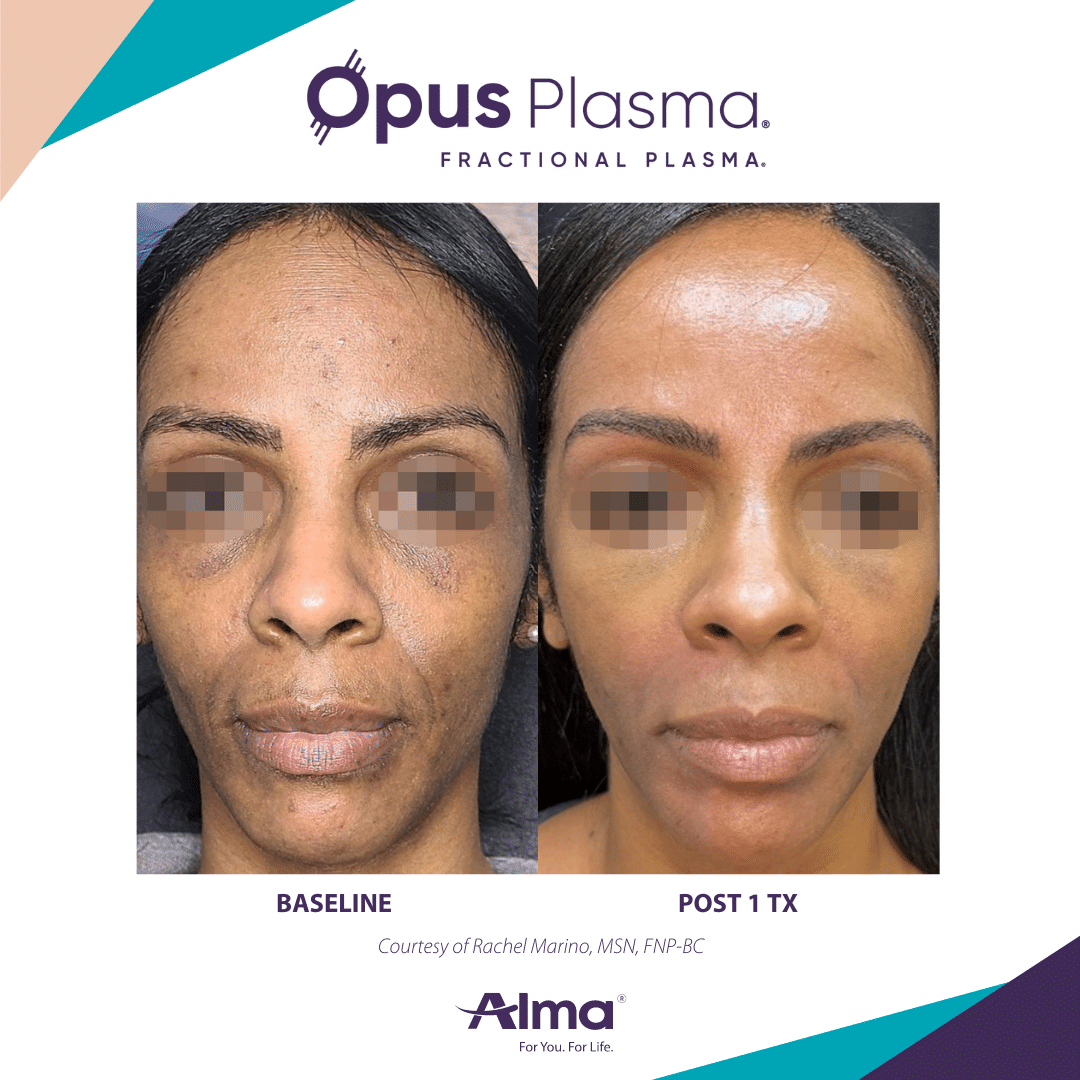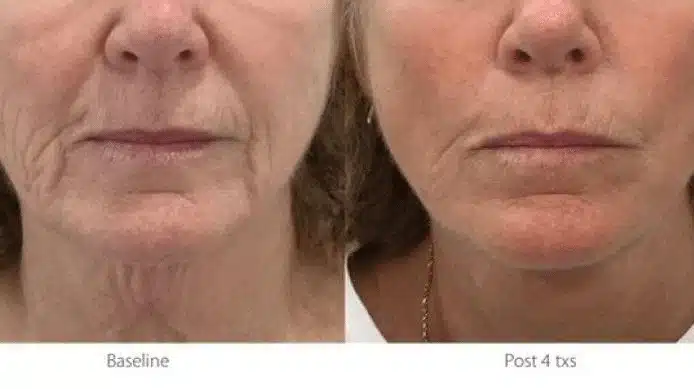Opus Plasma Treatment in Chicago at Olivo MedSpa

Achieve Youthful-Looking Skin with Advanced Technology
Welcome to Olivo MedSpa, where cutting-edge treatments meet personalized care. If you’re looking to rejuvenate your skin without surgical procedures, our Opus Plasma treatment in Chicago is the perfect solution. This FDA-cleared, nonsurgical skin rejuvenation therapy uses radiofrequency (RF) and plasma to address a wide range of skin concerns, from fine lines and wrinkles to acne scars and stretch marks.
What is Opus Plasma?

Opus Plasma is an innovative skin treatment that combines RF energy and plasma to improve the appearance of your skin. Here’s how it works:
- Metal Pins emit high-frequency RF energy.
- The RF energy reacts to atmospheric pressure, creating plasma energy.
- The plasma heats the skin, forming micro-injuries that stimulate the body’s natural wound-healing response.
- This process promotes new collagen and elastin production, leading to healthier, more youthful-looking skin over time.
Benefits of Opus Plasma Treatment
Unlike traditional laser skin resurfacing, Opus Plasma offers similar results with less downtime. Here are some key benefits:
- Versatility: Suitable for various skin types, including darker skin tones.
- Quick Sessions: A full-face treatment takes approximately 20 minutes.
- Customizable: Treatments can be adjusted for light, moderate, or aggressive settings to suit your aesthetic goals.
- Minimal Downtime: Light to moderate treatments require only 1-2 days of recovery time, while more aggressive sessions may need up to a week.
Why Choose Opus Plasma?
Opus Plasma treatment stands out for its ability to treat both the face and body with customizable tips for small and large areas. You can expect:
- Noticeable Improvements after just one session, though 2-5 treatments are recommended for best results.
- Safe and Effective for addressing fine lines, hyperpigmentation, skin laxity, acne scars, sun damage, and uneven skin texture.
- Enhanced Comfort with the use of a topical anesthetic and, if needed, injectable anesthetic nerve blocks or mild oral sedation.
What to Expect During and After the Treatment
During the Treatment
- Preparation:
- Cleansing the skin.
- Application of a topical anesthetic to minimize discomfort.
- The Procedure:
- The provider will glide the handpiece across the treatment area, using settings tailored to your skin type and concerns.
- Focus tips may be used for specific smaller areas.
- Post-Treatment Care:
- A balm will be applied to protect the treated area as it heals.
Recovery Time
- Light to Moderate Treatments:
- Expect swelling and redness for 24-48 hours, similar to a bad sunburn.
- Normal activities can usually be resumed with mineral-based makeup.
- Aggressive Treatments:
- Recovery may take 3-5 days, with some patients experiencing swelling for up to a week.
- Post-Procedure Care:
- Follow skincare instructions to keep your skin moist and protected.
- Avoid sun exposure and use a high-SPF sunscreen for at least two weeks.
Ideal Candidates for Opus Plasma
The ideal candidates for Opus Plasma skin resurfacing are individuals aged 30-60 who are concerned with skin aging and seek non-surgical skin rejuvenation. If you’re aiming to reduce the appearance of fine lines, acne scars, skin laxity, and uneven skin tone, this treatment could be a good candidate for you.
Achieve Your Aesthetic Goals with Olivo MedSpa
Experience the benefits of advanced technology and personalized care at Olivo MedSpa in Chicago. Our experts are dedicated to helping you achieve your aesthetic goals with minimal recovery time and optimal results. Whether you’re dealing with sun damage, stretch marks, or uneven skin texture, our Opus Plasma treatment can help you attain younger-looking skin.
Don’t wait to improve the appearance of your skin. Book your first treatment with Olivo MedSpa today and discover the remarkable benefits of Opus Plasma skin resurfacing. Contact us now to schedule your consultation and start your journey towards a more youthful, radiant complexion.
—
By utilizing all the key features and benefits of the Opus Plasma treatment, this page aims to attract potential clients and provide comprehensive information about the procedure, ensuring they make an informed decision.

